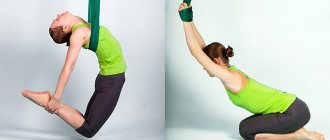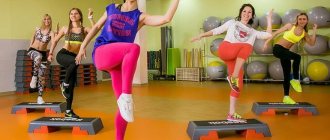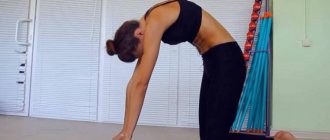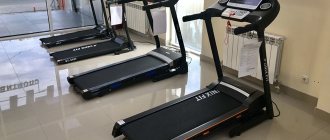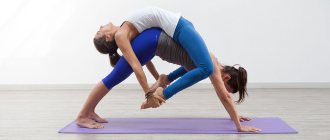Stretching is one of the most underrated forms of fitness. It is most often associated with simple exercises such as “leaning forward and touching your toes,” so its importance is often underestimated, depriving yourself of the benefits of such a warm-up.
During the process of growth and aging, changes occur in muscle tissue. Incorporating stretching into a regular training schedule will ensure uniform muscle growth along the fibers and increase the level of flexibility. This will give you the ability to move in any direction with ease and provide more energy to perform various actions.
In addition, stretching helps to achieve:
- Increasing joint flexibility
- Improves blood circulation in the muscles and joints that were targeted by stretching exercises
- Increased energy levels as increased blood flow brings in more oxygen and glycogen
- Improved motor coordination
- Increases speed and strength
There are seven different types of stretching exercises, and while some of them overlap, and some are part of a standard training routine and are therefore nothing new, it's best to take a closer look at them and figure out what they do.
Active stretching
Swing your legs to the side, a typical element of active stretching
In active stretching, you take a certain position and maintain it only with the help of your own agonist muscles (prime movers). To hold the body in the desired position, agonist muscle groups have to tense, while antagonist muscles begin to stretch. For example, a stance in the position of a side kick, characteristic of martial arts, helps to stretch the adductor muscles, increases the flexibility of the athlete’s body and the height of the leg when striking.
The effect of active stretching is based on a physiological reaction called reciprocal inhibition. If one muscle group is held in a tense position for a long period of time, then the muscle groups opposite it do not need to remain tense, so they relax and stretch. Most often, the position must be held for no longer than 30 seconds, and sometimes results can be achieved in less than 10–15 seconds.
Active stretching is widely used in yoga classes. Martial artists and ballet dancers also use it heavily. Active stretching techniques improve performance in most sports.
How long does the workout last?
A standard workout lasts from 45 to 60 minutes and is divided into 6 stages. Unlike traditional types of fitness, it does not begin with a warm-up, but with several exercises to establish breathing control. After this, the instructor gives exercises to warm up the main muscles and ligaments. Particular attention is paid to the cervical region and joints. At the third stage, begin exercises with a hammock. The first movements are made with support on the floor. The transition to “air execution” occurs gradually.
Anti-gravity yoga training
At the fourth stage, we completely lift off the floor, and all exercises are performed on weight. The fifth stage is the most difficult. It consists of inverted poses. They require more concentration and skill. Therefore, in groups for beginners this stage is reached gradually, over the course of several lessons. At first it’s 1 – 2 simple asanas, and after a few lessons you can introduce a whole block of “head down” poses into your training. The sixth stage is relaxing meditation. It gives you the opportunity to calm down and tune in to a positive mood.
Passive stretching
An example of passive stretching - the well-known split
Passive stretching is a form of stretching ideal for doing with a partner. In this case, it is necessary that the body remains completely passive, and all actions are performed with the application of external force (with the help of a partner). If training is carried out without a partner, body weight and gravity are used as an external force. For this reason, passive stretching is also called relaxed stretching.
An example of passive stretching is the well-known split. By spreading your legs as wide as possible and releasing your body weight on them, you allow your feet to naturally slowly slide further to the sides. Research has shown that passive stretching is ideal for muscle recovery from injury because it is done gradually and requires some time for each position.
Basic set of exercises
Stretch exercises are selected based on age and general level of physical fitness. Beginners can use a universal set of classes:
- STRETCHING. For the muscles of the back, shoulders and arms from a vertical position. While standing, you need to pull both arms up alternately. The correct performance of the exercises is indicated by a feeling of moderate tension in the muscles; PHOTO 8
- WORKING THE NECK MUSCULATES. Place your right hand on your waist, your left palm on your head, and gently tilt your head to the left. Do 10 approaches on each side, resting for a few seconds between stretches;
- WORKING ALL MUSCLE GROUPS. Lean on your bent left knee, move your right leg bent at the knee forward. Extend your right arm up and slowly, smoothly lean back. The exercise is performed on each side 5-6 times;
- TRAINING THE MUSCULAR CORSET OF THE BACK AND LEGS. Press your hands and back tightly against the vertical wall, slowly lower down, the spine should remain straight. It is recommended to do up to 6-7 squats;
- WORKING THE MUSCULARITY OF THE NECK AND SPINE. Sit on a chair, cross your legs and lean them on the floor. Place your palms and press your chin to them. Strain your neck and arms, you need to withstand the effort for half a minute. You need to do 8 repetitions, relaxing between them for 20 seconds;
- PRESS AND BACK TRAINING. Sitting on the floor, spread your legs wide, place the palms of your hands on the back of your head. Slowly, with a round back, bend towards your knees, alternately for 8 repetitions;
- GENERAL STRETCHING. Position – standing on all fours, at the same time you need to pull your right leg back and the opposite hand forward. Movements should be smooth but slow. You need to do 7-8 stretches.
There are many other exercises.
Static stretching
Static stretching is perhaps the most common type of stretching exercise. In this case, it is necessary to hold the body for about 10–20 seconds in positions that require tension, but do not cause discomfort. This type of stretching is often used as part of a regularly performed warm-up in various sports, since with static stretching the body is not subjected to extreme stress. This has led to the misconception that stretching must be done during warm-up to prevent sports injuries, and that stretching improves athletic performance.
In 2013, three unrelated research projects looked at this issue from different perspectives. The first study, published in the Scandinavian Journal of Medicine & Science in Sports, found that incorporating static stretching into a warm-up routine reduces muscle performance and causes instability in muscle function, which can lead to increased muscle performance. injury rate, instead of reducing it.
A second study, published in the Journal of Strength & Conditioning Research, found that static stretching performed as part of a warm-up resulted in an immediate decrease in muscle performance. These findings were bolstered by a third study, published in the same publication, which found that the long-term benefits of pre-exercise static stretching were marginal at best.
Benefit
Stretching exercises have gained popularity not only due to the ease of their implementation and the possibility of training at any age. Regular exercises contribute to:
- While working out almost all muscle groups of the body, regular fitness does not give this result;
- Removing nerve and muscle blocks in all parts of the body, which reduces pain. Many women note a decrease in pain during menstrual periods when doing exercises;
- Activation of the work of peripheral vessels, due to this, congestion is eliminated, and, accordingly, the development of such dangerous pathologies as thrombosis and atherosclerosis is prevented;
- Reduce salt deposits. Stretching is one of the most effective ways to prevent hypokinesia and osteoporosis;
- Straightening posture, correcting figure volumes;
- Increasing self-esteem, relieving mental stress;
- General rejuvenation of the body.
Stretch exercises can be performed at any time of the day. They can be done during cardio training and strength training. The first results of the classes become clearly noticeable within a month - without problems or difficulties, people sit in the lotus position, bend without tension, and become more resilient.
Isometric stretching
Example of isometric stretching: “pushing the wall”
Isometric stretching is a type of stretching that involves the resistance of muscle groups caused by isometric contractions of the muscles being stretched. Examples of isometric stretching: “pushing the wall” to warm up the calf muscles, bending forward with your foot on the bar counter and trying to reach your head to your knee, and also stretching the biceps by resting your straight arm on the wall and applying force to it.
There is some evidence that isometric stretching exercises performed over a long period of time promote the development of muscle hypertrophy (increase in size). This is due to the fact that this type of stretching involves the resistance of muscle fibers.
Peculiarities
The uniqueness of Aero Yoga lies in a special hammock attached to the ceiling in a special way. The material for production is nylon or silk. The maximum permissible weight of a person is 180 kg. Thanks to this, Antigravity is suitable for overweight people.
Part of the weight load goes to the hammock, so even physically unprepared people find it easier to perform the exercises.
Aero yoga classes are available to people with disorders associated with the spine, and even with cerebral palsy.
The hammock can be fixed at any height, taking into account a person’s height and fitness.
Beginners are recommended to exercise at a distance of no more than 50 centimeters from the floor surface. Experienced practitioners can hang the hammock at a height of one meter from the floor surface. Important! Anti-gravity yoga is safe for all parts of the spine, since part of the weight load is transferred to the hammock. This allows you to remove tension from the body and stretch the muscles.
Dynamic stretching
Dynamic stretching uses weak swings, with the help of which the body and limbs perform a full range of movements. Since during dynamic stretching the speed of exercises increases gradually, and the range of movements remains within the comfort zone, this type of stretching is most often recommended for use as a warm-up.
For golfers, boxers, martial artists and ballerinas, dynamic stretching is part of a standard intensive training complex. A 2011 study published in the European Journal of Applied Physiology found that dynamic stretching improved performance in sprinters and other intense athletes.
Program for dynamic stretching from darebee.com (clickable image)
Dynamic stretching training program
Another study, published in 2012 in the Journal of Sports Science and Medicine, compared the benefits of dynamic and static stretching for intensely training athletes. It turned out that athletes who used only dynamic stretching in their warm-up showed better results than those who performed static stretching exercises. However, the greatest increase in range of motion (ROM) was demonstrated by athletes who combined both types of stretching. This suggests that better results can be achieved by creating a mixed warm-up complex.
Ballistic Stretching
Ballistic stretching uses the momentum of a moving body or penis in an attempt to force it outside of its normal range of motion. This is different from dynamic stretching, which involves gradual controlled stretching, up to, but not beyond, the normal range of motion.
An example of a ballistic stretch is bouncing up and down repeatedly to touch your toes. This type of stretching is not generally considered beneficial and can lead to injury as it does not allow your muscles to adjust to, and relax in, the stretched position. On the contrary, it can cause them to tense up, repeatedly activating the stretch reflection. However, if your athletic event requires ballistic movement, then it may be appropriate and possibly necessary to perform ballistic stretching exercises as part of your training.
Ballistic stretching uses the momentum of a moving body or a limb in an attempt to force it beyond its normal range of motion. This is different from dynamic stretching, which involves controlled gradual stretching up to but not beyond the normal range of movement.
An example of ballistic stretching is bouncing up and down repeatedly to touch your toes. This type of stretching is generally not considered useful and can lead to injury as it does not allow your muscles to adjust to, and relax in, the stretched position. Conversely, it may cause them to tighten up by repeatedly activating the stretch reflex. However, if your sporting event requires a ballistic movement, then it may be appropriate and perhaps necessary to conduct ballistic stretching exercises as part of your preparation.
—————————————————————————————-
Ballistic stretching
Ballistic stretching is a type of stretching that uses jumping and sudden movements. This form of stretching is strongly discouraged by the American Academy of Orthopedic Surgeons and is considered one of the most common causes of stretching injuries.
Ballistic stretching exercises should not be attempted without an adequate warm-up, as they push your body beyond its comfort zone. Using ballistic stretching as a warm-up is unacceptable. Ballistic stretching, after a good warm-up, is widely used by martial artists, ballet dancers and gymnasts to expand a comfortable range of motion and increase body flexibility.
Research on ballistic exercises shows that when performed after a core workout or as a stand-alone routine, they help increase range of motion and improve performance. Martial artists, gymnasts and dancers know this very well.
What is aerial yoga (anti-gravity)
For those who are tired of traditional fitness programs, we recommend trying a new direction in yoga called aerial yoga or anti-gravity, which is becoming very popular. It includes various techniques and styles: from yoga and Pilates asanas to therapeutic and acrobatic gymnastics exercises. But the main feature of anti-gravity is that the entire session is carried out using a special hanging hammock. Because of this, this direction is often called “aerial yoga” or “hammock fitness.”
The advantage of aerial yoga is the ability to perform various asanas that are not available in the traditional direction. To date, there are about 3,000 known poses that can be performed using a hammock. In addition, it allows you to complicate or, on the contrary, ease them, as well as reduce or completely remove the load on the spine.
PNF stretching
PNF stretching (Proprioreceptive Neuromuscular Facilitation) is a set of stretching techniques that helps increase both active and passive range of motion and provides significant increases in flexibility.
A study published in the journal Animal Science found that moderate-intensity stretching exercises (including PNF stretching) performed after a workout helped stimulate muscle growth, resulting in increased muscle strength and size.
As for warm-up complexes, PNF stretching is better suited for them than other options, since it uses resistance to the applied force, after which the muscles relax, and then repeated stretching occurs. This allows for increased joint flexibility and strength by stimulating four separate, sometimes overlapping responses: autogenic inhibition, reciprocal inhibition, tension release and pain blocking theory. This is all explained in detail in a study on the benefits of PNF stretching published in the Journal of Human Kinetics.
Isometric Stretching
Isometric stretching is a type of static stretching (meaning it does not use movement) that involves resistance of muscle groups through tensing of the stretched muscles. Isometric stretching is one of the fastest ways to develop increased static or passive flexibility, and is much more effective than either passive stretching or active stretching alone. Isometric stretching is quite demanding on the muscle tendons and joints, and therefore should not be performed more than once a day for a given muscle group.
Isometric stretching is a type of static stretching (meaning it does not use motion) which involves the resistance of muscle groups through tensing of the stretched muscles. Isometric stretching is one of the fastest ways to develop increased static or passive flexibility, and is much more effective than either passive stretching or active stretching alone.Isometric stretching is quite demanding on the muscle tendons and joints, and therefore should not be performed more than once per day for a given group of muscles.
The most common ways to provide the needed resistance for an isometric stretch are to apply resistance manually to one's own limbs, to have a partner apply the resistance, or to use a wall or the floor to provide resistance.
———————————————
When is stretching needed?
If you use stretching to warm up before training, choose dynamic or PNF; all other types are performed after training, when the muscles are properly warmed up. Stretching can also be done as an independent training complex, performed on a special day.
The bottom line is that stretching is definitely necessary and will always help you achieve better results, you just need to carefully choose when to do it and what type of stretching to prefer. No one is stopping you from doing a variety of stretching exercises rather than just sticking to one specific type. But don't forget to consider possible undesirable consequences to keep your muscles healthy and elastic.
How did it appear?
The existing form of classes dates back to the 90s of the twentieth century. But the history of Aero Yoga is more ancient. Man has always sought to overcome the influence of gravity, so various techniques using ropes (korunta) or poles (mallabhamb) are of great interest to practitioners even today.
Previously, such activities were not understandable and accessible to everyone, and some even considered them life-threatening. But at the beginning of the last century, Iyengar and his daughter Gita adapted ropes with fastenings on the wall for exercise. The training helped to fight excess weight, overcome the postpartum period and eliminate back pain. Thanks to this technique, asanas became easier to perform and were accessible even to those for whom traditional yoga was not suitable for health. But, it should be noted that the exercises required increased concentration and physical fitness.
At the end of the twentieth century, director K. Harrison proposed using a special hammock instead of ropes for dance training. The new product was well received by the dancers and was used at all rehearsals and performances. Based on exercises with a hammock in the USA, a special fitness program was developed for everyone. Later, Aero Yoga conquered the whole world.
